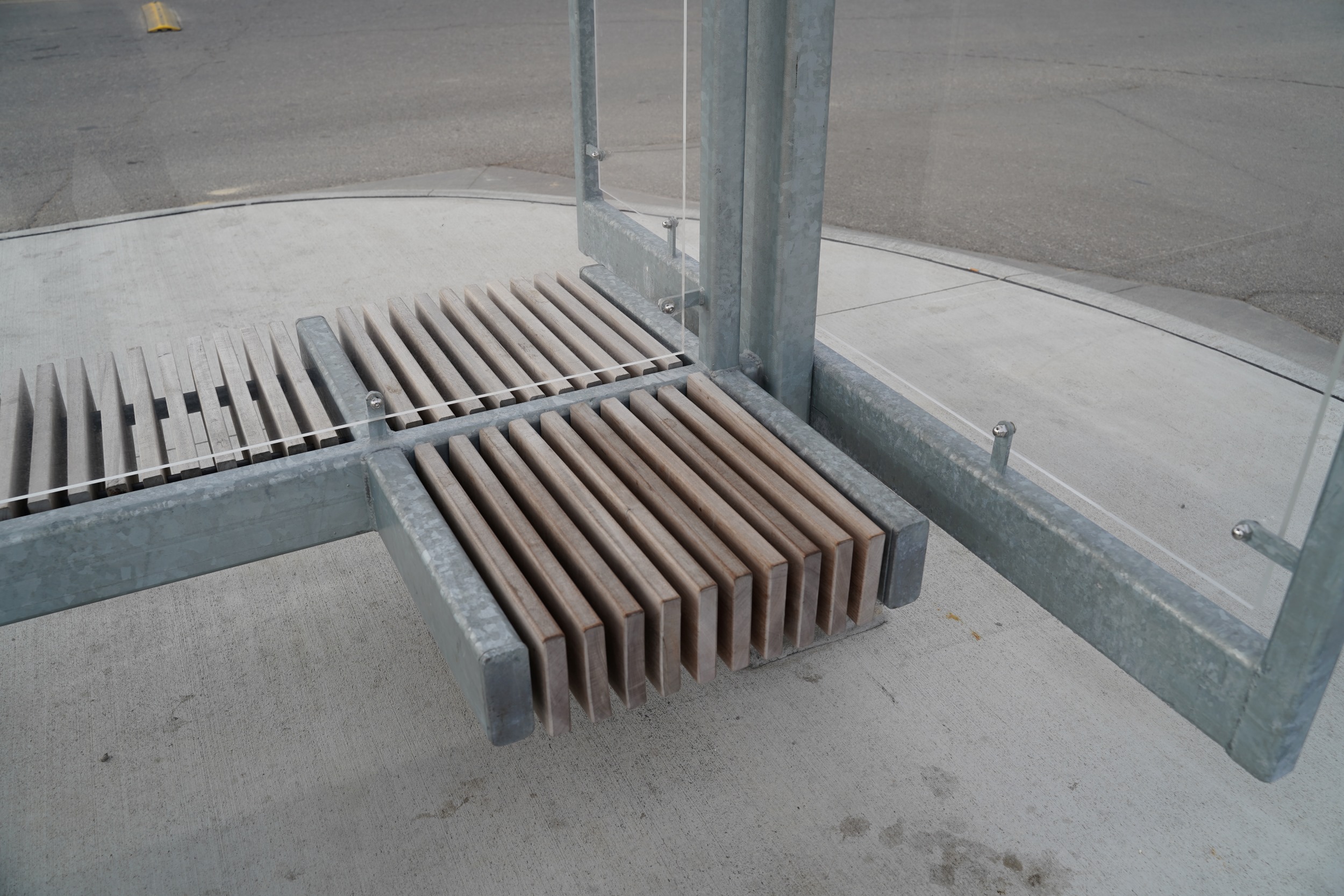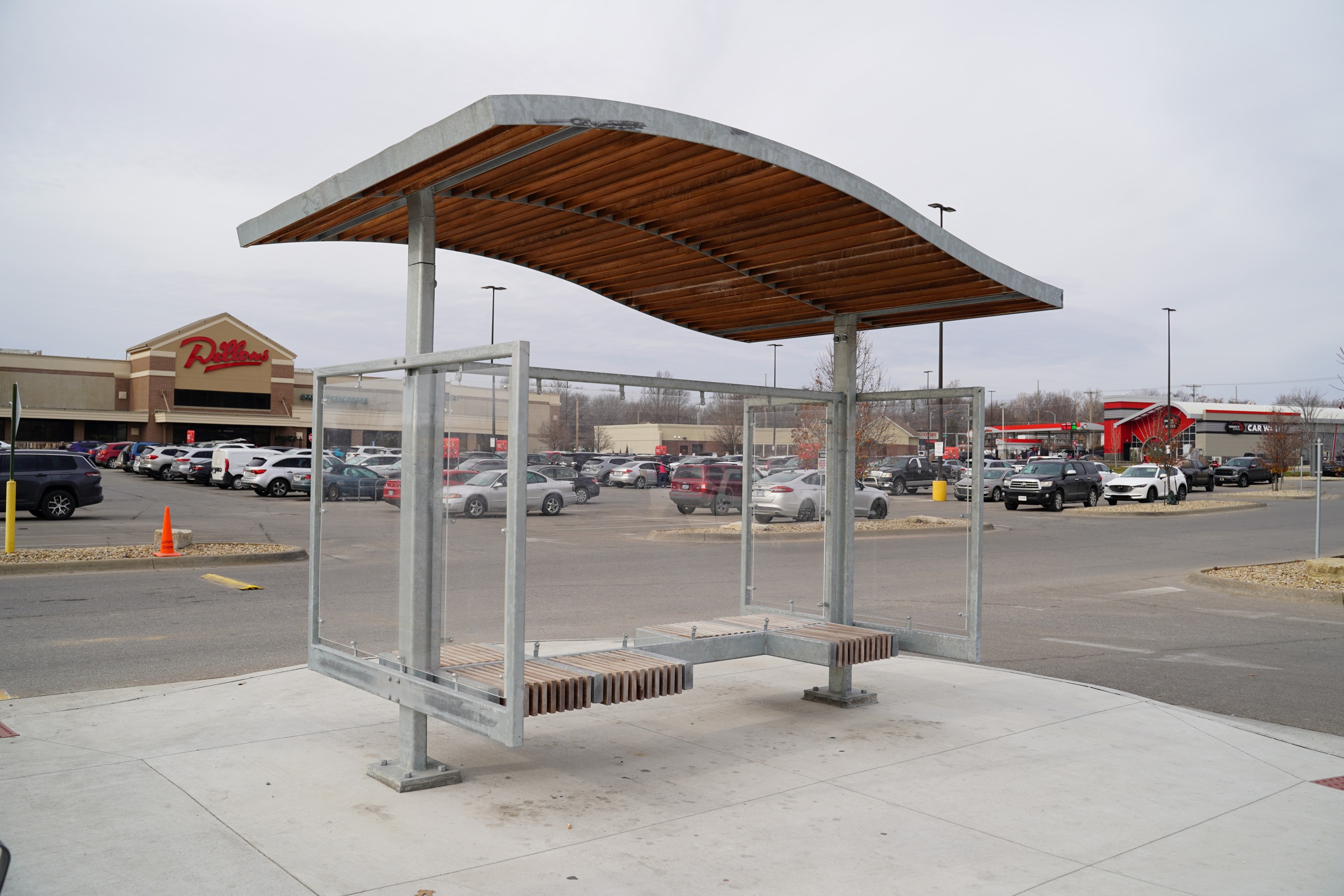Bus Shelter
for Flint Hills aTa
The Flint Hills Area Transportation Agency, or aTa for short, provides transportation for the Flint Hills region of Kansas. The Flint Hills aTa Bus Stop changes the perception of public transportation in the Flint Hills region. The design’s appearance shows the identity of the community in a single glance. The bus stop is easy to manufacture and install around the Manhattan community. It is designed to be manufactured with sustainable and cost-effective materials that can handle the weather in Manhattan. The bus shelter fits the users’ needs by providing a map inside the shelter to display the bus routes and locations. It protects the users from the climate when necessary and provides a shelter large enough to support a group of individuals. In addition, the design provides a sheltered environment that allows users to feel safe and secure while still providing a clean, environmentally friendly shelter for the community.
In 2017, the Department of Interior Architecture and Industrial Design, within the College of Architecture, Planning & Design at Kansas State University, was sponsored to conceive of a family of outdoor furniture products, from which the bus shelter design was selected to be used at transit stops. Assistant Professor Steve Davidson, now emeritus faculty, led the effort to complete the original drawings, models, and prototype along with master’s students Natalie Healey (‘18), Jevin Yoder (‘18), and Sunny Zijun Zhao (‘18), who used this project as their culminating work. Master’s student Julian Lee (‘19) then developed the fabrication drawings with consultation from Walter P Moore, a Kansas City engineering firm that provided structural engineering drawings and calculations.


Not only was the design intended to be artful by reflecting the beauty of the Flint Hills through its sweeping roof, but it needed to be durable and functional. The two-post construction allowed for the benches and roof to float above the sidewalk for a minimum, streamlined appearance while maximizing the graceful curve of the roof above. The design also creates an elegant solution for wheelchair-accessible areas under the awning, protecting patrons from the elements while waiting for transit.
“We are proud of our students’ bus shelter design. The students' solution represents how transformative design can be in orchestrating context, human needs, and aesthetic delight. We were fortunate to have such a great partner in the Flint Hills ATA that had the tenacity to bring the bus shelter to the finish line,” said Nathan Howe, department head of Interior Architecture and Industrial Design.
Stephanie Peterson, Director of Community Development for Manhattan, commented, “(w)e have waited a long time for bus shelters here in Manhattan! These permanent fixtures will serve as a continuous reminder of the incredible partnership we have between the University and the community. As an alumna of the College of Architecture, Planning & Design, it was a privilege to work with a talented group of students who took an idea and turned it into reality."
